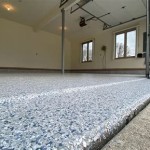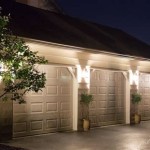Painting Your Garage Door For a Fresh, Updated, Wood-Like Look
A garage door, often a prominent feature of a home's facade, can significantly impact curb appeal. An outdated or faded garage door can detract from an otherwise well-maintained property. Painting the garage door is a relatively inexpensive and straightforward way to refresh its appearance. Achieving a wood-like finish, in particular, can add warmth, character, and a touch of sophistication to the exterior.
This article will explore the process of painting a garage door to create a realistic wood-like effect. It will cover preparation, material selection, painting techniques, and considerations for different types of garage doors. The goal is to provide a comprehensive guide that enables homeowners to transform their garage doors into aesthetically pleasing focal points.
Preparation is Key to a Successful Wood-Look Garage Door Painting Project
Prior to beginning any painting project, thorough preparation is essential. This ensures proper adhesion of the paint, a smooth finish, and a longer lifespan for the paint job. Neglecting these initial steps can lead to peeling, bubbling, or an uneven appearance.
The first step is cleaning the garage door. This involves removing any dirt, grime, mildew, or loose paint. A pressure washer can be used for this purpose, but care should be taken to avoid damaging the door's surface, especially if it is made of wood or has fragile components. Alternatively, the door can be scrubbed with a mixture of water and a mild detergent. A stiff brush can be helpful for removing stubborn dirt.
After cleaning, inspect the garage door for any damage, such as dents, rust, or cracks. Dents can be filled with an automotive body filler, while rust should be removed with a wire brush or sandpaper. Cracks should be sealed with an appropriate exterior-grade sealant. Ensure that all repairs are fully cured and sanded smooth before proceeding to the next step.
Next, protect surrounding areas from overspray. This includes masking off trim, windows, and any other surfaces that should not be painted. Painter's tape and plastic sheeting are effective for this purpose. Pay close attention to detail when masking, as even a small amount of overspray can be difficult to remove.
Finally, prime the garage door. Primer provides a uniform surface for the paint to adhere to and helps to block stains. Use an exterior-grade primer that is compatible with the type of paint that will be used for the wood-look finish. Apply the primer evenly, using a brush, roller, or sprayer. Allow the primer to dry completely according to the manufacturer's instructions before proceeding to the next step.
Selecting the Right Materials for a Realistic Wood-Grain Effect
The choice of materials plays a crucial role in achieving a realistic wood-grain effect. Selecting the appropriate paint, tools, and techniques is essential for a convincing and durable finish.
The base coat should be a solid color that resembles a wood tone. Popular choices include browns, tans, and grays. Select a high-quality exterior acrylic latex paint that is designed for use on metal or wood, depending on the garage door's material. This type of paint is durable, weather-resistant, and easy to apply. A satin or eggshell finish is generally preferred, as it provides a more natural look than a glossy finish.
The graining coat will create the wood-like texture and detail. This requires a translucent or semi-transparent stain or glaze in a contrasting color to the base coat. For example, if the base coat is a light brown, a darker brown glaze can be used to create the grain. Experiment with different colors and combinations to achieve the desired effect. Water-based glazes are typically easier to work with and clean up than oil-based glazes.
Specialized tools are necessary for creating the wood-grain effect. A wood-graining tool, also known as a rocker or a graining comb, is a rubber tool with a grooved pattern that is used to create the appearance of wood grain. These tools come in various sizes and patterns, allowing for different wood-grain effects. A brush, such as a chip brush or a foam brush, is also needed for applying and manipulating the glaze. Additionally, a clean rag or sponge is helpful for wiping away excess glaze and blending the grain.
Consider using a top coat to protect the faux wood finish. An exterior-grade clear coat will provide an additional layer of protection against the elements and help to prevent the paint from fading or chipping. Choose a clear coat that is compatible with the base coat and graining coat.
Techniques for Achieving a Convincing Wood-Grain Finish
The application of the wood-graining technique is the most critical aspect of this project. Patience and practice are key to achieving a realistic and aesthetically pleasing result. The technique involves applying a glaze over a base coat and then using a specialized tool to create the wood-grain pattern.
Begin by applying a thin, even coat of the graining glaze over the base coat. Work in small sections, typically no more than a few feet wide, to prevent the glaze from drying too quickly. The glaze should be applied smoothly and evenly, without any drips or runs.
Immediately after applying the glaze, use the wood-graining tool to create the wood-grain pattern. Press the tool firmly against the glaze and rock it back and forth as you move it across the surface. Experiment with different angles and pressures to achieve the desired effect. Overlapping the strokes slightly will create a more natural look.
If the grain pattern is too uniform or artificial-looking, use a clean rag or sponge to lightly wipe away some of the glaze. This will soften the lines and create a more subtle effect. Different wiping techniques can be used to create different textures and patterns. For example, dabbing the surface with a sponge will create a more porous look, while dragging a rag across the surface will create a more linear look.
Repeat the process of applying glaze, creating the grain pattern, and wiping away excess glaze until the entire garage door is covered. Overlap the sections slightly to ensure a seamless transition. Take breaks as needed to avoid fatigue and maintain focus.
Once the glaze has dried completely, apply a clear coat to protect the finish. This will help to prevent the paint from fading or chipping and will also make the surface easier to clean. Apply the clear coat evenly, using a brush, roller, or sprayer. Allow the clear coat to dry completely according to the manufacturer's instructions.
Experimentation is encouraged. Practice the technique on a scrap piece of material before applying it to the garage door. This will allow for refining the technique and selecting the best colors and tools for the desired effect. Consider researching different wood-grain patterns and attempting to replicate them.
Considerations for Different Garage Door Materials
The type of material the garage door is made of will influence the preparation and painting process. Different materials require different primers, paints, and techniques.
For metal garage doors, ensure that any rust is thoroughly removed and treated with a rust-inhibiting primer. Choose a paint specifically designed for metal surfaces, as this will provide better adhesion and durability. Avoid using dark colors on metal garage doors, as they can absorb heat and cause the door to warp or buckle.
For wood garage doors, inspect the wood for any signs of rot or decay. Replace any damaged wood before painting. Sand the entire surface to create a smooth, even base for the paint. Use a high-quality exterior wood primer and paint that is designed to protect against moisture and UV damage.
For composite garage doors, follow the manufacturer's recommendations for painting. Some composite materials may require a special primer or paint. Avoid using harsh chemicals or abrasive cleaners, as these can damage the surface.
Insulated garage doors may have different surface textures or coatings. Consult the manufacturer's instructions for painting insulated garage doors. Ensure that the paint is compatible with the insulation material and will not damage it.
Regardless of the garage door material, proper preparation and the use of high-quality materials are essential for a successful and long-lasting paint job.
By following these steps and considerations, homeowners can transform their garage doors into beautiful, wood-like features that enhance the curb appeal of their homes. The process requires careful preparation, the right materials, and a methodical application of the wood-graining technique. With patience and attention to detail, a stunning and durable wood-look finish can be achieved.

Diy Garage Door Makeover With Gel Stain Fresh Mommy Blog

Create A Faux Wood Garage Door With Gel Stain Crazy Life Littles

Create A Faux Wood Garage Door With Gel Stain Crazy Life Littles

Create A Faux Wood Garage Door With Gel Stain Crazy Life Littles

Create A Faux Wood Garage Door With Gel Stain Crazy Life Littles

Diy Garage Door Makeover With Stain Domestically Speaking

How To Paint A Door Look Like Wood It S Easier Than You Think Average But Inspired

Faux Wood Door Gel Stain Diy How To Make Your Look Like

How To Paint A Wooden Garage Door What Should You Use

How To Paint A Door Look Like Wood It S Easier Than You Think Average But Inspired
Related Posts








